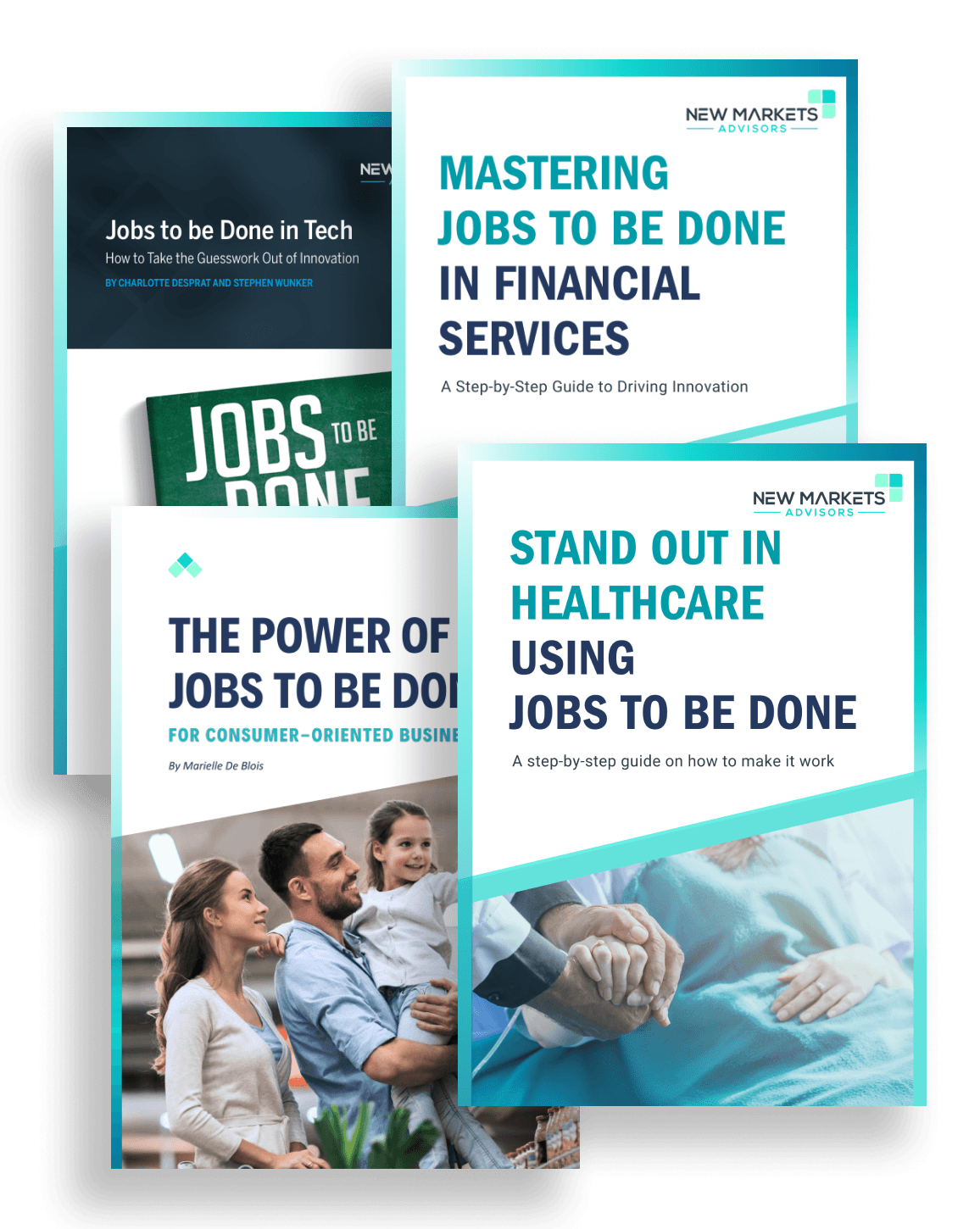SERVICE
Ground your strategy in what customers are actually trying to accomplish
Jobs to be Done (JTBD) is a way to understand why people choose certain products or services. Customers don’t simply buy features; they “hire” solutions to help them with their priorities. These priorities may be practical, emotional, or social, and they shape the choices people make. By focusing on the customer’s context, motivations, and measures of success, JTBD helps organizations uncover unmet needs, design offerings that resonate, and avoid wasted innovation. At New Markets Advisors, we use JTBD to tie strategy directly to customer priorities, creating growth strategies that work in the real world.
Jobs to be Done is a powerful framework that helps you understand the underlying motivations and desired outcomes that drive customers to purchase and use your products or services, for both B2C and B2B businesses
Instead of focusing on current behaviors, it asks, “What exactly is the customer trying to get done?” By shifting attention from behavior to motivation, Jobs to be Done enables you to predict what will resonate with customers and avoid innovations that fall flat
Rather than just selling features or benefits, Jobs to be Done empowers your team to focus on the essential Jobs customers need to accomplish
This perspective not only broadens creative possibilities but also leads to solutions that are more impactful and customer-centered
Jobs to be Done Example
Let’s break this down with a simple example: Coffee. People don’t simply buy coffee—they turn to it to fulfill specific Jobs in their lives.
For some, it’s about staying alert and productive during a busy morning
For others, it’s about enjoying a moment of comfort or connecting socially with friends
By identifying and understanding these functional and emotional Jobs, as well as the obstacles that might stand in the way (like limited time or access), businesses gain actionable insights that guide innovation and strategy.
How is Jobs to be Done different from other research methods?
Traditional market research often misses the mark when it comes to understanding the deeper motivations behind customer behavior. While other methods focus on demographics or purchases, Jobs to be Done offers a unique approach that goes beyond the surface level. It doesn’t rely on customers to articulate their needs precisely, nor does it measure everything solely in functional terms. Instead, Jobs to be Done provides a rigorous framework for uncovering the underlying reasons behind customer actions, highlighting new opportunities, identifying adoption barriers, and evaluating the competitive landscape from a fresh perspective.
Jobs to be Done Focuses on the Underlying Need
Unlike traditional methods that often concentrate on demographics and psychographics, Jobs to be Done digs deeper into the motivations that actually drive customer behavior, providing a clearer understanding of what truly matters to your customers.
Jobs to be Done Offers a More Accurate Understanding of Behavior
While traditional research often relies on averages and behaviors in isolation, Jobs to be Done focuses on specific purchase and usage events, allowing you to understand how your product or service fits into real-life customer contexts—capturing the nuance that other methods miss.
Jobs to be Done Uncovers Unmet Needs
Jobs to be Done excels at revealing latent, unmet needs—those that customers may not even be able to express directly. By focusing on the Jobs customers are trying to accomplish, Jobs to be Done helps companies identify areas where they can uniquely deliver value and solve problems in new ways.

free Resource
Read Chapter 1 of our Jobs to be Done Book
Jobs to be Done: A Roadmap for Customer-Centered Innovation by Stephen Wunker, Jessica Wattman, David Farber. Chapter 1: “Jobs: What Customers Are Trying to Get Done”
Download Chapter 1

free Resource
Learn how to apply Jobs to be Done to Your Industry
Our track record of success with Jobs to be Done
With over two decades of experience, we have partnered with more than 100 clients to help them become more customer-centric through Jobs to be Done. Our work has contributed to the successful launch of new products, supported the development of go-to-market plans, guided businesses in creating effective growth strategies, and strengthened clients’ capabilities.
Clients who trust us
TESTIMONIALS
What our clients are saying
Our Team
The Experts at New Markets
At New Markets Advisors, we pride ourselves on having a team of recognized experts who have not only applied the Jobs to be Done framework across a broad range of industries, but have also contributed extensively to the theory’s development and practical application. Our leadership team brings decades of collective experience, and each has made significant contributions to advancing the field.






































